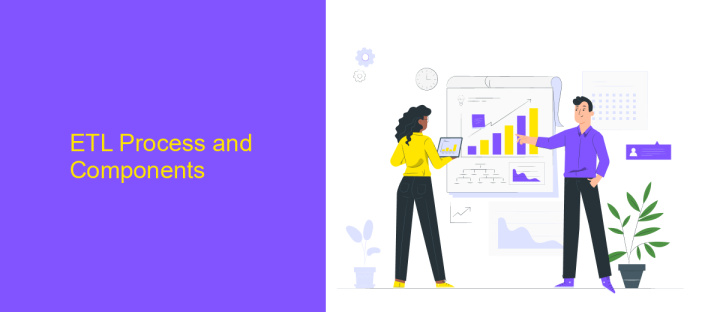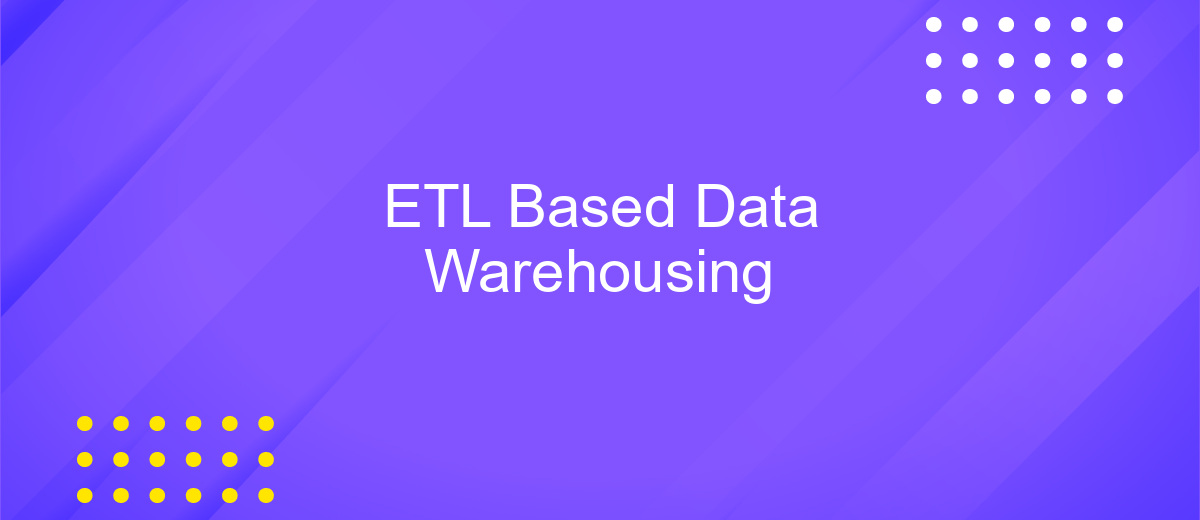ETL Based Data Warehousing
In today's data-driven world, businesses rely heavily on efficient data management systems to gain actionable insights. ETL (Extract, Transform, Load) based data warehousing has emerged as a crucial solution, enabling organizations to consolidate, cleanse, and analyze vast amounts of data. This article explores the fundamentals of ETL processes and their pivotal role in optimizing data warehousing for enhanced decision-making.
Introduction to ETL and Data Warehousing
ETL (Extract, Transform, Load) and Data Warehousing are fundamental components in modern data management. ETL processes are designed to extract data from various sources, transform it into a suitable format, and load it into a data warehouse for analysis and reporting. Data Warehousing, on the other hand, involves the storage and management of large volumes of data from multiple sources, enabling efficient querying and data analysis.
- Extract: Gathering data from diverse sources such as databases, APIs, and flat files.
- Transform: Converting data into a consistent format, including data cleaning, normalization, and aggregation.
- Load: Inserting the transformed data into a data warehouse for further use.
Utilizing ETL tools and services like ApiX-Drive can streamline the integration process, allowing businesses to automate data workflows and ensure data consistency. ApiX-Drive offers a user-friendly interface and robust capabilities for connecting various data sources, making it an essential tool for efficient ETL operations and effective data warehousing.
ETL Process and Components

The ETL (Extract, Transform, Load) process is a fundamental component of data warehousing, enabling the systematic collection, processing, and storage of data from various sources. During the extraction phase, data is gathered from different databases, APIs, and other repositories. This data is then transformed to ensure consistency, accuracy, and compatibility with the target data warehouse. Transformations may include data cleansing, normalization, and aggregation to optimize the data for analysis and reporting. Finally, the transformed data is loaded into the data warehouse, where it becomes accessible for business intelligence and decision-making purposes.
ETL components typically include tools and services that facilitate each stage of the process. For instance, services like ApiX-Drive can be used to streamline data integration by automating the extraction and loading of data from various sources. ApiX-Drive supports a wide range of integrations, making it easier to connect disparate systems and ensure seamless data flow. Additionally, transformation tools within the ETL framework handle data manipulation tasks, ensuring that the data is accurate and ready for use. Together, these components form a cohesive system that enhances data warehousing efficiency and reliability.
Data Warehousing Architecture and Components

Data warehousing architecture is a critical component in modern data management strategies. It typically consists of several layers and components that work together to store, process, and analyze large volumes of data efficiently. These components ensure the smooth flow of data from various sources into a centralized repository where it can be accessed and analyzed.
- Data Sources: These include databases, flat files, and external data sources from which data is extracted.
- ETL (Extract, Transform, Load) Tools: These tools, such as Apache Nifi, Talend, and ApiX-Drive, help in extracting data, transforming it into a suitable format, and loading it into the data warehouse.
- Data Staging Area: A temporary storage area where data is cleaned and transformed before loading into the warehouse.
- Data Storage: The central repository where processed data is stored, often implemented using relational databases or cloud storage solutions.
- Metadata Management: Tools that manage metadata, providing information about data sources, transformations, and storage.
- Data Access Tools: These include reporting tools, OLAP tools, and data mining tools that allow users to access and analyze the data.
Effective data warehousing architecture enables organizations to consolidate data from multiple sources, ensuring data integrity, consistency, and accessibility. Services like ApiX-Drive streamline the integration process, making it easier to connect various data sources and automate data workflows, thus enhancing the overall efficiency of data management strategies.
Integration of ETL and Data Warehousing

Integration of ETL (Extract, Transform, Load) and data warehousing is crucial for effective data management and analytics. ETL processes extract data from various sources, transform it into a suitable format, and load it into a data warehouse. This integration ensures that the data warehouse contains clean, accurate, and timely data for analysis.
To achieve seamless integration, it is essential to choose the right tools and services. One such service is ApiX-Drive, which automates data transfers between different systems. ApiX-Drive simplifies the ETL process by providing a user-friendly interface and robust functionalities.
- Automated data extraction from multiple sources
- Efficient data transformation and cleansing
- Reliable data loading into the data warehouse
- Real-time data synchronization
By leveraging services like ApiX-Drive, organizations can streamline their ETL processes, reduce manual effort, and ensure data accuracy. This integration ultimately enhances the overall performance of the data warehouse, enabling better decision-making and business intelligence.


Benefits and Challenges of ETL Based Data Warehousing
ETL based data warehousing offers numerous benefits, including improved data quality, centralized data storage, and enhanced decision-making capabilities. By extracting data from diverse sources, transforming it into a consistent format, and loading it into a data warehouse, organizations can ensure that their data is accurate and reliable. This centralized repository allows for more efficient data analysis and reporting, enabling businesses to make informed decisions quickly. Additionally, ETL processes can be automated, reducing the time and effort required for data integration and minimizing the risk of human error.
However, ETL based data warehousing also presents several challenges. The initial setup can be complex and time-consuming, requiring significant resources and expertise. Data transformation processes must be carefully designed to handle various data formats and ensure consistency. Moreover, maintaining and updating the ETL processes can be labor-intensive, especially as data sources and business requirements evolve. Tools like ApiX-Drive can help streamline these integrations by providing a user-friendly platform for automating data flows between different systems, reducing the burden on IT teams and ensuring data remains up-to-date and accurate.
FAQ
What is ETL in the context of data warehousing?
Why is ETL important for data warehousing?
What are the main challenges in implementing an ETL process?
How can automation improve the ETL process?
What are some best practices for designing an ETL process?
Time is the most valuable resource in today's business realities. By eliminating the routine from work processes, you will get more opportunities to implement the most daring plans and ideas. Choose – you can continue to waste time, money and nerves on inefficient solutions, or you can use ApiX-Drive, automating work processes and achieving results with minimal investment of money, effort and human resources.

